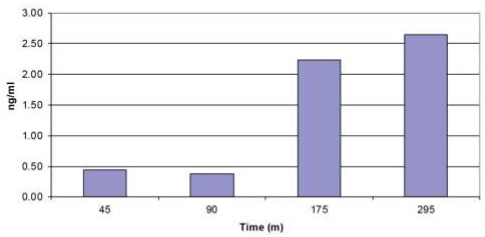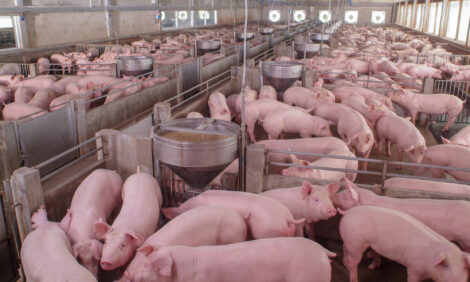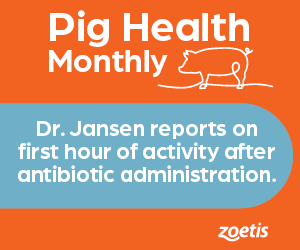



Investigation of Translactational Analgesia for Reducing Piglet Pain at Castration
Experiments at the Prairie Swine Centre presented at the Centralia Swine Research Update 2014 indicate that the level of Metacam transferred to piglets in milk is unlikely to reduce pain following castration.
Summary
Public concern regarding painful livestock procedures such as castration is increasing, reported Y.M. Seddon and colleagues at the Prairie Swine Centre. Piglet castration has been criticised, largely because pain medication is not commonly used. The cost and time required to administer analgesics to individual piglets are the main deterrents to the swine industry adopting this practice. Having an affordable and practical method of delivering pain medication would likely increase the use of pain medication by producers, and increase the acceptance of this procedure.
The objective of this study was to determine if pain medication can be transferred to the piglet through the sow’s milk, and if so, to determine how effective this technique is for reducing acute pain at the time of castration, and for reducing pain and inflammation after surgery. A novel technique for measuring pain in piglets using a handling chute was also developed.
Results showed that the transfer of the analgesic, Metacam®, to piglets via the sow’s milk was not effective, as the maximum concentration of analgesic in piglet blood (up to five hours after injection of the sow) was less than 1/200th of that found in sow’s blood, and 1/80th of that found in milk. Thus, the concentration of analgesic transferred to piglets via milk was too low to provide effective pain relief. Modification of the drug could result in increased transfer to piglets. Work is ongoing to validate the use of the handling chute for measurement of castration pain in piglets.
Introduction
Concerns regarding painful procedures in livestock production are increasing, with the castration of piglets being one of the key issues related to pig production. Castration of male piglets is done to avoid ‘boar taint’, the development of undesirable odours which can occur in the meat of adult boars. The main concern related to piglet castration is that it is typically done without the use of analgesics.
The cost and time required to administer a pain medication to individual piglets reduces its adoption by producers. It is estimated to cost the Canadian industry C$2 million on an annual basis. However, if an affordable and practical method of delivering pain control were available, its use would likely increase. Studies with cattle have found that pain medication can be transferred through the milk at lactation. However, there is a lack of research in this area in pigs and no knowledge of the extent of passive drug transfer to offspring through the milk.
This study examined analgesic drug levels in paired samples of sow blood and milk, and the amount of drug transferred to piglets through the consumption of milk.
Work was also done to develop a novel behavioural test to assess pain in piglets, as currently our ability to assess pain responses in young piglets is very limited. Previous studies have shown there is little difference in the behaviour of castrated and non-castrated piglets after castration, as piglets generally continue to feed and rest with their littermates following the procedure, with only minor changes in posture and movement. However, physiological research has demonstrated that piglets do experience pain following castration, and refining behavioural methods for pain assessment are needed as such tests will aid in the development and refinemen of pain control techniques. The pain assessment research is ongoing, and will be completed in late 2013.
Experimental Procedures
The first objective of this project was to determine the levels of pain medication (Metacam®) that are excreted via the milk, and to compare concentrations of the drug in sows’ blood and milk over a five hour period.
The second objective was to determine the amount of drug transferred to piglets via the sow’s milk, and to identify the optimum time period that will provide the maximum transfer of drug to piglets.
A final objective of the study is to evaluate the use of a handling chute with hurdles for assessing piglet pain responses following castration.
Materials and Methods
The first experiment studied the transfer and excretion of analgesic in milk. Twelve sows were injected with Metacam at seven days post-farrowing, with each sow receiving one of three dosages (0.50, 0.75 or 1.00mg per kg). After the injection, eight blood samples were collected from each sow using an ear vein jugular catheter over a five-hour period to determine the kinetics of absorption and distribution. Three milk samples were collected from each sow at approximately one, three and five hours following injection.
Methods for analysing the drug concentration in blood and milk by high performance liquid chromatography (HPLC) were developed and validated at the University of Saskatchewan.
In the second experiment, examining drug transfer to piglets, we injected sows with Metacam and then collected blood samples from two male piglets per litter to determine the levels of analgesic that are transferred to piglets through the sow’s milk. A third experiment to assess whether translactational analgesia is effective at reducing pain was initially planned but was not performed due to the low levels of drug found in piglets.
A further study is now underway to assess the pain responses of piglets to castration, comparing piglets given pain relief via an injection of Metacam prior to castration, with sham-castrated piglets (handled for castration, but not castrated). Metacam is a non-steroidal anti-inflammatory (NSAID) drug, similar to aspirin, and is expected to reduce pain and inflammation following castration. However, it not likely to have a significant effect on acute pain experienced at the time of castration.
As a method to more clearly identify pain responses following castration, the researchers have developed a chute with hurdles which piglets are placed at different time intervals following castration. The chute will help assess piglet pain responses on the assumption that piglets will take longer to travel down the chute and over two hurdles (requiring lifting of the rear legs), if they are experiencing pain. The stride length of the rear legs will also be measured as the piglets traverse the chute by painting the piglet’s feet with ink and recording stride length. Other measures will also be used to assess pain, including monitoring behaviour following castration (lying, standing, time spent suckling).
Results and Discussion
Metacam concentrations in blood peaked between one and two hours after injection, with peak concentrations of approximately 450±200ng per ml. Concentrations in milk were greatest at three hours after injection, with peak concentrations of approximately 200±100ng per ml following injection of 1mg per kg Metacam. A high degree of variation was found in the drug concentrations in blood and milk samples from different sows.
Drug transfer to piglets
In the second study, analgesic concentrations in the sows’ milk were found to follow a similar pattern to those observed in the first study. Average Metacam concentrations in milk at one, three and five hours following injection are shown in Table 1.
| Table 1. Average Metacam® concentrations in milk over a five-hour period in experiment 2 |
||
| Time post injection (m) | Mean calculated conc. (ng/mL) | Standard deviation |
|---|---|---|
| 60 | 148.67 | 11.33 |
| 180 | 188.33 | 80.03 |
| 300 | 139.03 | 84.11 |
Analgesic concentrations in the sow’s milk peaked at three hours post injection at 188ng per ml, similar to the level observed in the first study at the same drug dosage. Average analgesic concentrations found in piglet blood in the five hours following injection of the sow are shown in Figure 1.

Drug levels were found to increase significantly over time, with a peak concentration of approximately 2.5ng per ml at 295 minutes post-injection, and the largest increase being between 90 to 175 minutes post-injection. A drop in analgesic concentration was not observed over the five-hour sampling period, and therefore the peak analgesic concentration achieved over time is unknown.
The low levels of Metacam detected in piglet serum are not promising in terms of the potential for this technique to offer pain relief. For example, sows given 1mg per kg in the second experiment achieved drug levels in serum up to 470ng per mL, and is approximately 150 times higher than levels found in piglet serum. In order for this technique to be successful, it may be necessary to modify the active drug to promote excretion via the milk.
Assessing pain responses in piglets
A chute was developed which can be installed behind the farrowing crate, and allows piglets to move down a one-metre corridor to return to the sow and her litter (see Figure 2).

Piglets were trained to negotiate the chute on the day before castration, and then on the day of testing, the responses of castrated and non-castrated piglets in the chute were compared. Initial results suggest that at 20 minutes after castration, castrated piglets were slower to move down the chute than non-castrated controls.
Additional validation work on use of the handling chute for pain assessment in piglets is being performed currently, with completion in September 2013.
Conclusions
With growing awareness of animal welfare issues in the retail market, practical and economic methods for pain mediation are needed for producers to meet increasing animal welfare standards.
Directly injecting analgesics into piglets involves drug administration and extra handling time. If effective, translactational medication could reduce the handling time involved and stress on piglets.
Unfortunately, the initial results presented here indicate that the level of Metacam transferred to piglets in milk is less than one per cent of that in sow blood and is not likely to reduce pain following castration. A modified drug, or other analgesics, e.g. Ketprofen®, may be more effective at delivering pain relief with this technique.
Further trials are in progress to evaluate the use of a handling chute for assessing piglet pain. If successful, the device will be a useful tool for evaluating and comparing techniques for providing pain relief at castration.
Acknowledgement: Strategic programme funding for this research was provided by Sask Pork, Alberta Pork, Manitoba Pork Council, and the Saskatchewan Agricultural Development Fund. Specific project funding was provided by the US National Pork Board.
Reference
Seddon Y.M., Stookey, J., Alcorn, J., Bouvier, M. and Brown, J.A. 2014. Investigation of translactational analgesia for reducing piglet pain at castration.. Proceedings of 33rd Centralia Swine Research Update. II-38–II-41.
July 2014


















